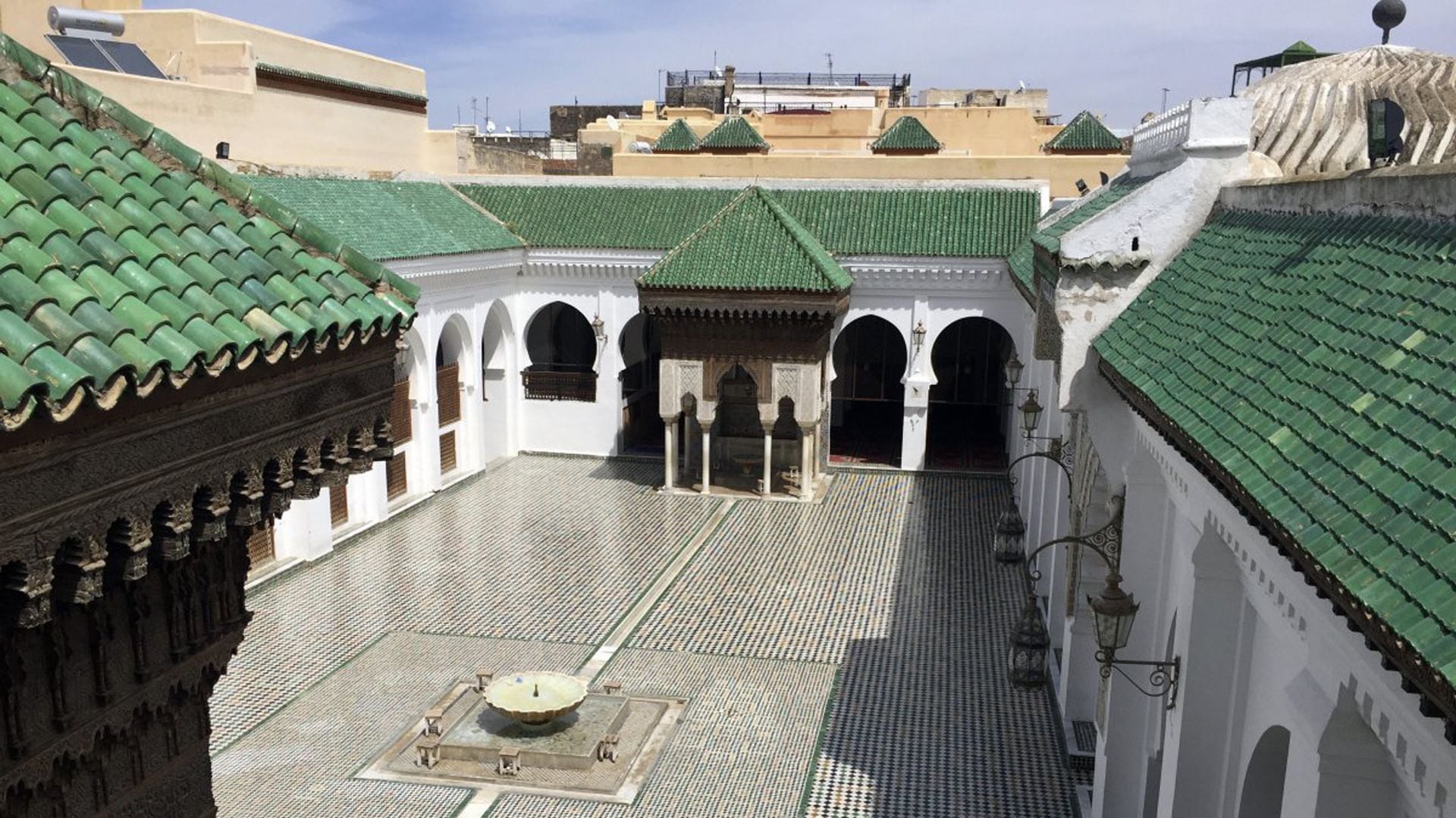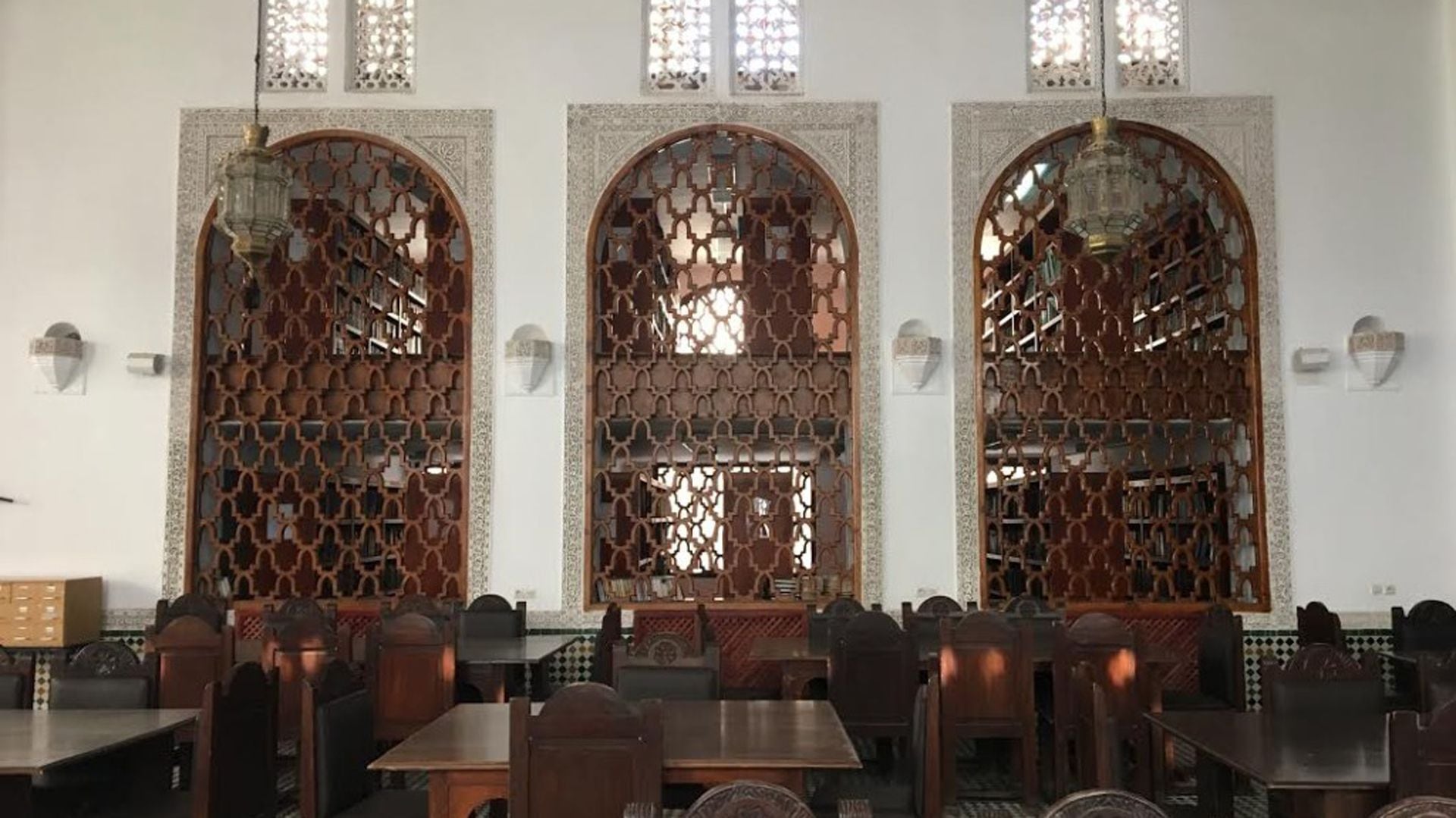
Morocco has recognized attractions such as Yamaa el Fna Square or the Sahara Desert, a large number of UNESCO World Heritage Sites and perhaps less well-known but no less important, such as the oldest library of those that exist today, located in the first university of the country, which is also one of the oldest in Europe, known as the madrasa of Qarawiyyin, founded in 859 of the modern era.
In Arab culture, an educational institution is called madrasa or madrasa, in particular, an Islamic religious school, it is located in Fez, one of the three most important cities in Morocco.
Another interesting thing that both the library and the university have is not only that they are the oldest, and that it preserves some manuscripts that are 12 centuries old, but also that it was two Tunisian sisters who founded the school, Fatima and Mariam al-Fihri, originally from Cairuan (in Arabic Qairawan, which is why it has the name Qarawiyyin).
How did it open its doors?

A research article entitled Fatima Al-Fihri Founder of the First World University compiles not only when it opened its doors, but also makes an attempt to learn more about the first founder of the first known educational centers.
This research was developed through the records of the 'Encyclopaedia Britanica', the three 'Encyclopedias of Islam', 'The Muslim Heritage of Our World', 'The Encyclopedia of Islam', 'The Encyclopedia of the World Atlas, 'and some other books and articles on history.
According to records, Fatima al Fihri was a Muslim woman who was born into a merchant family and she valued education in women. However, much of the information about his first years of life has been lost. It is known that Fatima and her sister Mariam were educated and devoutly religious.
When Fez began to become the center of culture, education and knowledge, Fatima Al Fihri began the construction of a University in conjunction with the great mosque, which would bear the same name: Qarawiyyin.

This mosque remains one of the largest in the world due to its capacity to house about 10,000 faithful.
“At the beginning of the ninth century, along with many other Arabs, during a period of difficult migration, the Al-Fihri family left Tunisia and migrated to Fez in search of better opportunities. Fez was considered a hectic and cosmopolitan metropolis by the standards of that time. It is also called the 'Muslim West', where art and science flourish along with religious tradition.”
Likewise, it should be made known that the large number of books translated, with scientific discoveries and ideas, reached universities such as the Sorbonne, Bologna and Pauda, through Tunisia, Morocco, Africa from the great university of Al-Fihri, 'Al-Karaouine' University
“These books were a living bibliographic treasure of the Latin and Greek language, medicine, astronomy, rhetoric, chemistry and mathematics.” For the University of Fatima already had a library with tens and hundreds of thousands of books in all fields of learning.

“Emphasizing the need for further education, in 859 AD, Fatima al-Fihri founded the mosque and university 'Al-Karaouine', named after her hometown.”
The building is 30 meters long, has an inner courtyard, courtyard, mosque, very spacious library and school premises. Fatima handled all the details of the construction.
“The concept of university as we know it today is exactly the result of the work of Fatima Al-Fihri.”
This university is not only the most important, but it is recognized as the pioneer in the award of various degrees, in the use of academic uniforms, presentation of oral defense and other practices related to higher education.
Religious and Koranic courses were first taught at university and later, the curriculum was expanded with “the introduction of Arabic grammar, mathematics, music, medicine and astronomy, as well as granting degrees to its graduates and seniors”.
KEEP READING:
Últimas Noticias
Debanhi Escobar: they secured the motel where she was found lifeless in a cistern
Members of the Specialized Prosecutor's Office in Nuevo León secured the Nueva Castilla Motel as part of the investigations into the case

The oldest person in the world died at the age of 119
Kane Tanaka lived in Japan. She was born six months earlier than George Orwell, the same year that the Wright brothers first flew, and Marie Curie became the first woman to win a Nobel Prize

Macabre find in CDMX: they left a body bagged and tied in a taxi
The body was left in the back seats of the car. It was covered with black bags and tied with industrial tape
The eagles of America will face Manchester City in a duel of legends. Here are the details
The top Mexican football champion will play a match with Pep Guardiola's squad in the Lone Star Cup

Why is it good to bring dogs out to know the world when they are puppies
A so-called protection against the spread of diseases threatens the integral development of dogs




